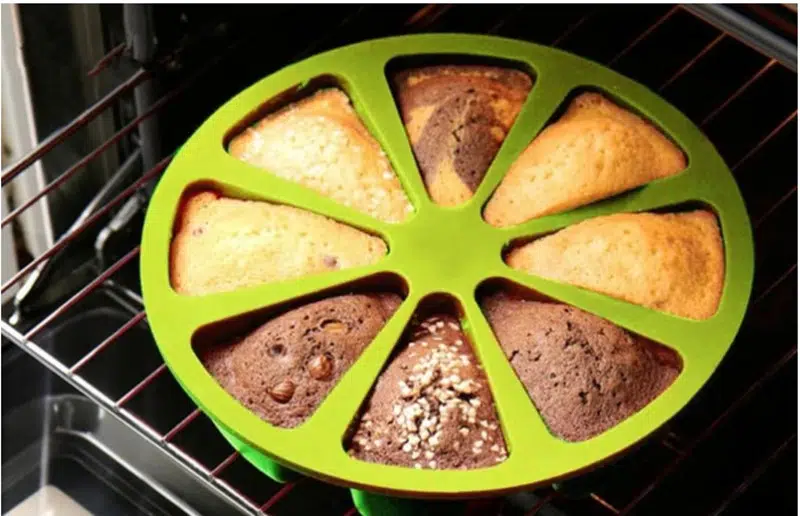How to Clean Silicone Baking Molds
Have you ever found yourself struggling to clean those stubborn silicone baking molds? You’re not alone. These versatile kitchen tools are fantastic for baking, but they can be a bit tricky to clean. Don’t worry—help is at hand.
Imagine effortlessly removing every bit of residue, leaving your molds looking as good as new. This guide will show you how to do just that.
By the end, you’ll have the confidence and know-how to keep your silicone baking molds spotless and ready for your next culinary masterpiece. Dive in and discover the secrets that will transform your cleaning routine.

Credit: puracy.com
Why Clean Silicone Molds
Cleaning silicone baking molds is important for safe and tasty baking. Dirt and grease can stay on molds after use. This affects the flavor and quality of your baked goods.
Keeping molds clean also helps them last longer. It stops damage and keeps silicone flexible and strong.
Benefits Of Clean Molds
Clean silicone molds give you many benefits. They help your food taste better and cook evenly. Clean molds stop old bits from mixing with new recipes.
- Prevent bad smells and flavors
- Keep mold shape and flexibility
- Stop bacteria and germs growth
- Make it easier to remove baked goods
- Extend the life of your molds
Common Residue Issues
Residue on silicone molds can cause problems during baking. Grease, flour, and sugar often stick to the surface. If not cleaned, they build up over time.
| Residue Type | Cause | Effect |
| Grease | Butter or oil used in baking | Sticky surface, bad smell |
| Flour | Dusting to prevent sticking | Burns and dark spots |
| Sugar | Syrups or sweet fillings | Caramelized residue, hard to clean |
Basic Cleaning Steps
Cleaning silicone baking molds is easy and keeps them in good shape. Regular care stops stains and smells.
Use simple methods like soaking and gentle scrubbing to clean your molds safely.
Soaking In Warm Soapy Water
Start by filling a sink or basin with warm water. Add mild dish soap to create suds. Place your silicone mold in the water.
- Let the mold soak for 15 to 30 minutes.
- This softens stuck-on food and grease.
- Soaking helps loosen debris without harsh scrubbing.
Gentle Scrubbing Techniques
After soaking, use a soft sponge or cloth to clean the mold’s surface. Avoid rough scrubbers that can damage silicone.
| Tool | Use |
| Soft sponge | Clean without scratching |
| Soft brush | Reach small crevices |
| Microfiber cloth | Dry and polish surface |
Removing Stubborn Stains
Silicone baking molds can get stained from oils and baked goods. Removing these stains keeps your molds clean and safe to use.
Some stains do not come off with regular washing. Use simple home ingredients to clean these tough spots.
Using Baking Soda Paste
Baking soda paste is a gentle scrub that lifts stains without damaging silicone. It works well on oily and baked-on spots.
Make a thick paste by mixing baking soda and water. Apply it to stained areas and let it sit for 15 minutes.
- Mix 3 tablespoons of baking soda with 1 tablespoon of water
- Spread the paste on the stains
- Wait 15 minutes for the paste to work
- Use a soft brush or cloth to scrub gently
- Rinse well with warm water
Vinegar Soak Method
Vinegar helps break down stubborn stains and grease on silicone molds. Soaking the mold lets vinegar reach tough spots.
Fill a basin with equal parts white vinegar and warm water. Soak your silicone mold for 1 hour, then rinse and dry.
- Mix equal parts white vinegar and warm water
- Place the mold in the vinegar solution
- Soak for 1 hour to loosen stains
- Rinse the mold with warm water
- Dry the mold completely before storing
Dealing With Grease and Odors
Silicone baking molds can trap grease and smells after use. Cleaning them well keeps your molds fresh and safe for baking.
Here are some easy tips to remove grease and odors from your silicone molds without damage.
Dishwasher Safe Tips
Most silicone molds are safe for dishwashers. Use these tips for best results:
- Place molds on the top rack to avoid direct heat.
- Use a mild detergent to prevent damage to the silicone.
- Check your dishwasher settings and choose a gentle cycle.
- Remove molds promptly to air dry and avoid odor build-up.
Natural Deodorizing Tricks
Natural ingredients help remove odors and clean grease without harsh chemicals.
| Ingredient | How to Use |
| Baking Soda | Sprinkle inside mold, scrub gently, rinse well. |
| White Vinegar | Soak molds for 30 minutes, then wash with soap. |
| Lemon Juice | Rub on mold surface, let sit 15 minutes, rinse off. |
Drying And Storing Tips
Cleaning silicone baking molds is easy, but drying and storing them properly is important. Good care helps keep them in shape and ready for next use.
This guide explains how to dry your silicone molds and store them safely. These tips prevent damage and extend their life.
Proper Air Drying
After washing, let your silicone molds air dry completely. Avoid using towels that might leave lint or damage the surface.
Place the molds in a clean, dry area with good airflow. This stops moisture build-up and prevents mold or odors.
- Turn molds upside down to drain water
- Leave space between molds for air circulation
- Dry at room temperature, away from direct sunlight
- Do not use heat sources like ovens or dryers
Storage To Maintain Shape
Store silicone molds flat or upright without bending them. This helps keep their shape and prevents warping.
Avoid stacking heavy items on top of the molds. Keep them in a dry place to avoid dust and dirt buildup.
- Use a drawer or shelf with enough space
- Keep molds separated to avoid sticking
- Use paper towels or cloth between molds if stacking
- Store away from sharp objects that can puncture silicone

Credit: consumersiliconeproducts.com
Avoiding Damage to Silicone Molds
Silicone baking molds are flexible and easy to use. Taking care of them helps keep their shape and quality. Cleaning them the right way avoids damage and extends their life.
Some cleaning methods can harm silicone molds. Using the wrong tools or temperatures can cause tears or warping. It is important to know what to avoid when cleaning your molds.
What Not to Use for Cleaning
Avoid harsh cleaning tools and chemicals on silicone molds. They can scratch or weaken the silicone material. Use soft sponges or cloths instead of rough brushes.
- Do not use steel wool or abrasive scrubbers
- Avoid harsh chemicals like bleach or strong detergents
- Stay away from sharp objects that can cut the silicone
- Do not use scouring powders that scratch the surface
Temperature Precautions
Silicone molds can handle heat but have limits. Avoid exposing them to extreme temperatures that can damage them. Check the manufacturer’s temperature guidelines before use.
Do not place silicone molds directly on open flames or heating elements. Let them cool before washing with cold water to prevent warping. Avoid sudden temperature changes.
- Do not use boiling water to clean hot molds immediately
- Avoid placing molds near direct flames or electric burners
- Do not freeze molds if not designed for freezing
- Follow temperature range given by the manufacturer

Credit: www.pjbold.com
Frequently Asked Questions
How Do I Remove Stubborn Stains From Silicone Molds?
To remove stubborn stains, soak the silicone mold in warm soapy water for 30 minutes. Gently scrub with a soft sponge. Avoid harsh chemicals to prevent damage. Repeat if necessary, then rinse thoroughly and air dry before next use.
Can I Clean Silicone Baking Molds In The Dishwasher?
Yes, silicone baking molds are dishwasher safe. Place them on the top rack to avoid warping. Use a gentle cycle and mild detergent. Ensure molds are completely dry before storage to prevent mold growth and maintain their shape.
What Household Items Clean Silicone Molds Effectively?
Baking soda and white vinegar work well to clean silicone molds. Make a paste with baking soda and water, apply it to stains, then scrub gently. Rinse with vinegar for extra cleaning power, rinse thoroughly, and dry before storing.
How Often Should Silicone Baking Molds Be Cleaned?
Clean silicone baking molds after every use to maintain hygiene and performance. Prompt cleaning prevents residue buildup and odors. Regular care extends mold lifespan and keeps your baked goods tasting fresh and clean.
Conclusion
Cleaning silicone baking molds keeps them safe and ready to use. Regular washing removes grease and food bits easily. Warm soapy water and a soft brush work best. Avoid sharp tools that can damage the silicone surface. Dry molds completely before storing to stop mold and odors.
Clean molds help your baked goods come out perfect every time. Simple care extends the life of your silicone molds. Keep these tips in mind for easy, stress-free cleaning. Your baking will be fresher and more enjoyable.
